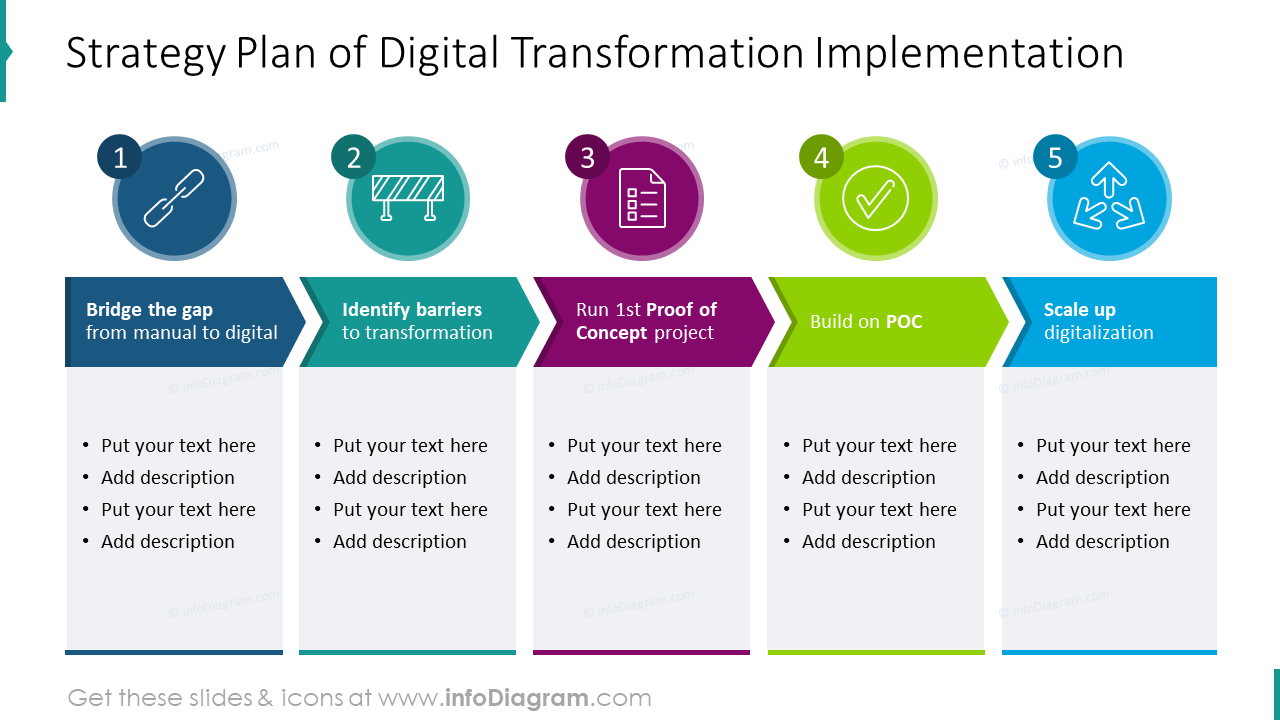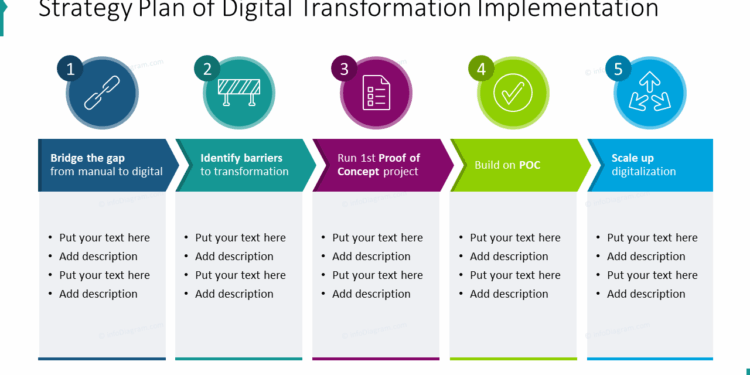Embark on a journey into the realm of DigiLife Digital Transformation Planning and Execution, where innovation meets strategy to reshape the digital landscape. This introduction sets the stage for a captivating exploration of the key elements that drive successful digital transformations.
In the following paragraphs, we will delve deeper into the intricacies of digital transformation planning and execution, uncovering the essential steps and strategies that organizations must embrace to thrive in the digital age.
DigiLife Digital Transformation Planning and Execution

Digital transformation planning is crucial for businesses looking to stay competitive in today's fast-paced digital landscape. It involves creating a roadmap to leverage technology effectively, streamline processes, and enhance customer experiences.
Importance of Digital Transformation Planning
Having a well-defined digital transformation plan helps organizations align their goals with technological advancements, identify areas for improvement, and adapt to changing market conditions. It ensures a structured approach to innovation and growth.
Key Steps in Executing a Digital Transformation Strategy
- Assess Current State: Evaluate existing systems, processes, and technologies to identify gaps and opportunities for improvement.
- Set Clear Objectives: Define specific, measurable goals that align with the organization's overall strategy and vision.
- Develop a Roadmap: Create a detailed plan outlining the steps, timelines, and resources required to implement the digital transformation strategy.
- Engage Stakeholders: Involve key stakeholders across the organization to ensure buy-in and support for the transformation initiatives.
- Implement Changes: Execute the planned initiatives, monitor progress, and make adjustments as needed to achieve the desired outcomes.
- Evaluate and Adjust: Continuously assess the impact of the digital transformation efforts, gather feedback, and refine strategies for better results.
Role of Technology in Facilitating Digital Transformation Planning and Execution
Technology plays a pivotal role in driving digital transformation by providing tools and solutions to streamline processes, automate tasks, and enhance decision-making. It enables organizations to leverage data analytics, artificial intelligence, cloud computing, and other digital technologies to innovate and stay ahead of the competition.
Understanding the Digital Landscape

In today's rapidly evolving business environment, digital transformation plays a pivotal role in shaping the success of organizations. It involves leveraging digital technologies to fundamentally change how businesses operate and deliver value to customers.
Traditional business models rely heavily on manual processes, paper-based documentation, and physical interactions. On the other hand, digitally transformed businesses embrace automation, data analytics, cloud computing, and other technologies to streamline operations, enhance customer experiences, and drive innovation.
Successful Digital Transformation Initiatives
- Amazon: The e-commerce giant transformed the retail industry by digitizing the shopping experience, offering personalized recommendations, and optimizing logistics with advanced algorithms.
- Netflix: By transitioning from a DVD rental service to a global streaming platform, Netflix revolutionized the entertainment industry, providing on-demand content to millions of subscribers worldwide.
- Uber: Disrupting the transportation sector, Uber introduced a digital platform that connects riders with drivers seamlessly, revolutionizing the way people commute in urban areas.
- Starbucks: Through its mobile app and loyalty program, Starbucks enhanced customer engagement and convenience, leading to increased sales and brand loyalty.
Developing a Digital Transformation Strategy

Creating a comprehensive digital transformation strategy is essential for organizations looking to thrive in the digital age. It involves a systematic approach to leveraging technology to drive business growth and innovation. Here's a breakdown of the process and key considerations:
Aligning Digital Transformation Goals with Business Objectives
It is crucial to align digital transformation goals with overall business objectives to ensure that technology initiatives contribute to the organization's success. This alignment helps in prioritizing investments, resources, and efforts towards strategic outcomes.
By aligning digital transformation goals with business objectives, organizations can drive sustainable growth, improve operational efficiency, and enhance customer experience.
Prioritizing Areas for Digital Transformation
Prioritizing areas for digital transformation within an organization involves assessing current capabilities, identifying areas for improvement, and determining the impact on key business processes. Here's how to prioritize effectively:
- Evaluate the urgency and potential impact of digital initiatives on business outcomes.
- Consider the readiness of the organization to adopt new technologies and processes.
- Assess the feasibility and cost-effectiveness of implementing digital transformation in specific areas.
- Engage key stakeholders to gain insights and support for prioritization decisions.
Implementing Digital Solutions
Implementing digital solutions is a crucial step in the digital transformation journey of any organization. It involves selecting the right tools and technologies to streamline processes, enhance customer experiences, and drive business growth.
Types of Digital Solutions
- Customer Relationship Management (CRM) software: Helps in managing customer interactions, tracking leads, and improving sales performance.
- Enterprise Resource Planning (ERP) systems: Integrates various business functions like finance, HR, and supply chain to improve overall efficiency.
- Business Intelligence (BI) tools: Enables data analysis and visualization to make informed business decisions.
- Internet of Things (IoT) devices: Connects physical devices to the internet for data collection and automation.
Best Practices for Implementation
- Define clear objectives: Identify the specific goals you want to achieve with the digital solution.
- Engage stakeholders: Involve key stakeholders from different departments to ensure buy-in and alignment.
- Provide adequate training: Educate employees on how to use the new technology effectively.
- Monitor and evaluate: Continuously assess the performance of the digital solution and make adjustments as needed.
Challenges and Solutions
- Resistance to change: Some employees may be reluctant to adopt new technologies. Address this by providing extensive training and highlighting the benefits.
- Integration issues: Ensuring seamless integration with existing systems can be a challenge. Working closely with IT experts can help overcome this hurdle.
- Data security concerns: Protecting sensitive data is paramount. Implementing robust security measures and compliance protocols can mitigate risks.
Measuring Success and Iterating
When it comes to digital transformation initiatives, measuring success and continuous iteration are crucial for long-term success.
Key Performance Indicators (KPIs)
- Utilize KPIs such as conversion rates, customer engagement metrics, ROI on digital investments, and employee productivity to gauge the effectiveness of digital transformation efforts.
- By tracking these KPIs, organizations can assess the impact of their digital strategies and make informed decisions for future improvements.
Importance of Continuous Evaluation and Iteration
Continuous evaluation and iteration allow organizations to adapt to changing market conditions, technology advancements, and customer preferences.
- Regularly assessing performance metrics helps in identifying areas of improvement and optimizing digital solutions for better outcomes.
- Iterating on digital strategies based on real-time data ensures that organizations stay competitive and relevant in the rapidly evolving digital landscape.
Examples of Adaptation Based on Performance Metrics
Several organizations have successfully adjusted their digital strategies by analyzing performance metrics:
- A retail company improved its online sales by redesigning its website based on user engagement data, resulting in a significant increase in conversion rates.
- A software firm enhanced its product features after monitoring customer feedback and usage analytics, leading to higher customer satisfaction and retention rates.
Outcome Summary
As we conclude our discussion on DigiLife Digital Transformation Planning and Execution, it becomes evident that the future of business lies in the hands of those who can adapt, innovate, and transform with agility. With a focus on aligning goals, implementing solutions, and measuring success, organizations can navigate the digital landscape with confidence and resilience.













